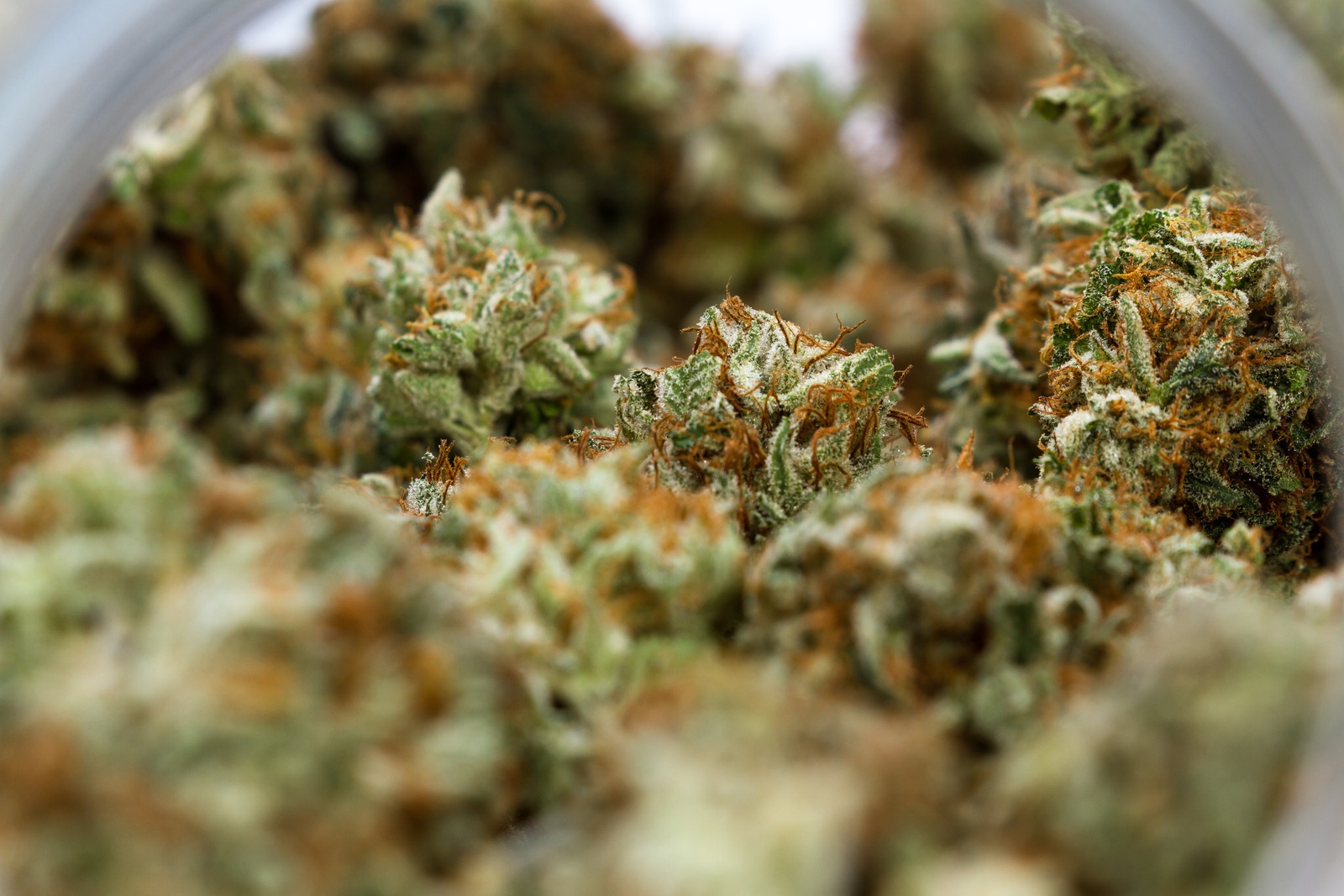Is Marijuana or Weed a Depressant, a Stimulant—Or Neither?

- Cannabis exhibits the characteristics of both depressants and stimulants (and hallucinogens), which makes recognizing this complexity important to the process of making your own informed decisions around usage.
- Concerning federal regulation, marijuana and cannabis-related products are classified as Schedule I controlled substances.
- The effects and side effects of marijuana on the CNS can vary depending on factors such as dosage, individual tolerance, and the method of consumption.
- Marijuana can also function as a stimulant, leading to heightened alertness, increased heart rate, and enhanced sensory perception in some individuals.
Approximately 18.7% of individuals over the age of 12—over 52 million people in all—used marijuana in the US, according to the 2021 National Survey on Drug Use and Health.[1] Also known by several other names, including weed or pot, marijuana continues to hold a significant place in the nation’s cultural practices, particularly in recent times with its widespread recreational use.
Its extensive history and recent movement for legalization have prompted inquiries into its classification, its potential health benefits, and its psychological impact.
The evolving legal status of marijuana reflects a growing social acknowledgment of its complex psychoactive properties, underscoring the need for nuanced classification beyond traditional categories like depressants, stimulants, or hallucinogenics. Providing clarity on this matter is important for dispelling misconceptions and offering insights into the potential psychological consequences of ongoing recreational marijuana use.
Is Weed a Depressant? How is Marijuana Classified?
Concerning federal regulation, marijuana and cannabis-related products are classified as Schedule I controlled substances, according to the Controlled Substances Act.[2] This designation signifies its perceived high potential for abuse, absence of recognized medical applications for treatment within the United States, and a perceived lack of safe use under medical supervision.
However, as of the time of this writing, 23 states (along with the District of Columbia and two US territories) have enacted legislation legalizing the possession and consumption of small quantities of cannabis for recreational purposes.[3] Despite marijuana’s federal classification, these state-level legalizations reflect evolving perspectives and approaches to cannabis regulation across the nation.
Due to its multifaceted effects on the central nervous system, marijuana exhibits properties characteristic of stimulants, depressants, and hallucinogenics, making it a substance that transcends simple classification.[4] Put another way, marijuana can have depressant effects—yet it can also act as a stimulant or a hallucinogenic, depending on the person or the situation. Such versatility underscores the complexity of its effects and the importance of ongoing research to understand its full impact on individuals and society.
How Marijuana Impacts the Central Nervous System
Marijuana’s interaction with the central nervous system (CNS) is a multifaceted process that influences various physiological and psychological functions.[5] Upon consumption, the active compounds in marijuana, notably tetrahydrocannabinol (THC), interact with cannabinoid receptors distributed throughout the CNS.
The effects and side effects of marijuana on the CNS can vary depending on factors such as dosage, individual tolerance, and the method of consumption. While commonly recognized for its potential to induce relaxation and euphoria, marijuana has also been long understood to possess the capacity to act as a depressant, stimulant, or hallucinogen, having the ability to exhibit properties of all three classifications.[6]
When acting as a depressant, marijuana may produce calming effects, which are thought to result from its modulation of neurotransmitter systems within the CNS rather than simply slowing down CNS activity. This may result in reduced anxiety, muscle relaxation, and sedation. Conversely, marijuana can also function as a stimulant, leading to heightened alertness, increased heart rate, and enhanced sensory perception in some individuals. Additionally, marijuana’s hallucinogenic properties can manifest as alterations in perception, mood, and cognition, giving rise to experiences such as vivid imagery and altered sense of time.
Additionally, low to moderate doses of cannabis-related substances may elicit one set of effects, while higher doses may produce contrasting outcomes. This phenomenon, known as biphasic effects, emphasizes the importance of considering your dosage to mitigate potential adverse effects.[7]
Examining the Biphasic Effects of Marijuana
Marijuana’s ability to act as both a depressant and a stimulant stems from its ability to modulate neurotransmitter activity within the CNS, resulting in a diverse array of physiological and psychological effects.
At lower doses, marijuana often exhibits depressant-like qualities, characterized by its ability to promote sedation. This calming effect is attributed to the interaction of cannabinoids, such as THC, with neurotransmitter systems involved in stress response and emotional regulation.
At higher doses, however, marijuana can evoke stimulant-like responses, leading to increased alertness, heightened sensory perception, and elevated heart rate.[8] This stimulant effect arises from the activation of cannabinoid receptors in regions of the brain associated with arousal and attention, resulting in enhanced cognitive function and sensory awareness.
The manifestation of these biphasic effects is not solely determined by dosage but is also influenced by factors such as tolerance, metabolism, and genetic predispositions. What may induce relaxation in one person might elicit heightened arousal in another, highlighting the variability in response to marijuana’s pharmacological effects. While smoking weed may alleviate symptoms of depression and anxiety in some users, it can exacerbate these conditions in others.
Marijuana and Depression: Separating Fact from Fiction
A growing body of evidence in recent years suggests a potential correlation between cannabis use and depression. Research on the relationship between cannabis use and depression is complex, with studies indicating a bidirectional association. While there is evidence to suggest that cannabis use may increase the risk of developing depression, there is also significant evidence that individuals with depression may be more likely to use cannabis, possibly as a form of self-medication.
While some studies suggest that marijuana and cannabis-related products hold continuing promise as a medical treatment, particularly for certain conditions, it’s also been demonstrated that marijuana use can have significant and lasting negative effects across various aspects of life:[10, 11]
- Mental health: Studies associate marijuana use with depression, anxiety, suicidal ideation, and psychotic episodes, though causality remains uncertain.
- Driving ability: Evidence suggests that driving under the influence of marijuana is associated with impairments such as slower reaction times, decreased coordination, and challenges in responding to road signals, contributing to erratic driving behavior and increased risk of accidents.
- Early life development: Marijuana use during pregnancy can lead to fetal growth restriction, premature birth, stillbirth, and adverse effects on brain function and development in infants. THC and other marijuana chemicals can also transfer to infants through breast milk, affecting their healthy development.
- Daily life: Research has found associations between regular marijuana use and various challenges in life domains such as relationships, education, and career achievement. Users may experience increased relationship problems, educational difficulties, and decreased life satisfaction. However, it’s important to consider that underlying personal and socio-economic factors can also influence these outcomes.
Ultimately, making informed decisions about your marijuana use also requires a comprehensive understanding of its effects and implications for your overall health and well-being.
Individual Responses to Marijuana
There is a wide variability in how individuals respond to marijuana.[12] Factors such as genetic makeup, tolerance levels, underlying mental health conditions, and past experiences with cannabis can significantly influence the effects experienced. Such diversity in responses underscores the need for personalized approaches to marijuana use, recognizing that what works well for one person may not be suitable for another.
Heightened self-awareness around this can empower you to understand your response to marijuana better and make more informed decisions about its use. By paying attention to how marijuana affects mood, cognition, and overall well-being, you can cultivate a more positive and health-conscious relationship with the substance, maximizing potential benefits while minimizing potential risks.
Seeking Professional Guidance
Consulting with healthcare professionals is essential for personalized advice on marijuana use. They can offer insights tailored to your needs, considering factors like medical history and mental health status. If you are experiencing potential depressive symptoms related to marijuana use, seeking help is important. Healthcare professionals can provide assessment, guidance, and appropriate interventions to address underlying issues.
Addiction treatment centers can also play a vital role in supporting individuals struggling with marijuana dependence or addiction. These centers offer comprehensive treatment programs, including addiction therapies, counseling, and support groups, to help individuals overcome problematic marijuana use.
Seeking professional guidance ensures access to specialized care and resources, empowering individuals to make informed decisions and take proactive steps toward better mental and physical health.
Making Informed Decisions on Marijuana Use
Marijuana’s effects can be multifaceted. Cannabis exhibits the characteristics of both depressants and stimulants (and hallucinogens), which makes recognizing this complexity important to the process of making your own informed decisions around usage.
Ultimately, it’s critical to seek reliable information and weigh the potential risks and benefits carefully. By staying informed and considering your well-being, you can empower yourself to make choices that align with your health and lifestyle goals. Whether considering recreational use or medicinal purposes, prioritizing education and mindfulness helps to ensure a more responsible approach to marijuana use.

